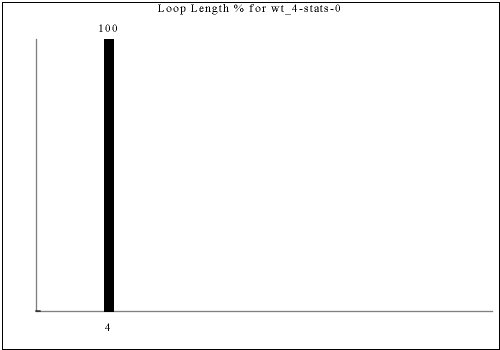


Index and details are here.
The various kinds of connectivity are mostly organized by properties of the shapes of the "connectivity loops" described previously. Additionally, some sets are described by the orientation of dead-ends in their tile-sets. (A dead-end in this context is a 1x1 tile which has only one corridor leading to it.)
In each of the sample images shown, the legend shows the corner constraints necessary to generate the tile-set, not the actual tile-set. See section 4 for details. The strategies needed (such as "wt-2222") are described in section 5.
There are many duplicates because the software that generated the data only eliminated duplicates and symmetries from the constraint rules, not from the final tile sets. The duplicates are included in the catalog in case I made any mistakes while hand-classifying them.
The catalog is arranged as follows:
If you're looking for simple, predictable-looking, look at the beginning. If you're looking for complicated, unpredictable-looking, look towards the end.
wt-2222
wt-2222
hbw-2222
hbw-2222
The following variation is the one used in the first herringbone Wang tile article, as connectivity is never forced through the middle of the 2x1 tiles, allowing every tile to choose for itself, independent of all Wang constraints, whether to add additional connectivity.

All tetris pieces can be tiled in some simple periodic pattern on the plane. It turns out that for every tetris piece except the "T", there is some corner color constraint set that will produce connectivity shapes consisting of that tetrris piece tiled on the plane. Of course they all have the same trivial stats shown above.
wt-2222
The 2x2 Tetris piece appears in connectivity loops with an interior dead-end. The tile set can have either 1 or 2 directions of dead-ends.
hbw-2222

wt-2222
hbw-2222
The following requires four corner colors (256 tiles in the set), allowing the output to omit both vertical and horizontal edges instead of only one as in the previous type. Note that this is essentially the same amount of tile content required to author a herringbone Wang tile set, which can have much, much more complicated connectivities.
A 4-move (1x1) loop appears every 2x2 tiles:
There are square waves horizontally repeating every 2 columns, duplicated every two rows:
hbw-2222
wt-2222
wt-3333
In each of the following tilesets , the loops form a Tetris piece (made of four 1x1 pseudo-tiles) which is intermixed with two other shapes (one made of two or three pseudo-tiles, the other of five or six).
wt-2222
hbw-2222
As above, but the extra shapes are made of 1 and 7 pseudo-tiles.

The connectivity loops for the following tilings each prominently include two or more Tetris pieces, along with two smaller and two larger shapes.
hbw-2222
wt-3333
wt-4444
hbw-2222
The following tilesets show a strong bias towards a brick pattern or a herringbone pattern.
These connectivity graphs show a strong diagonal bias, and feature a high frequency of 1x1 loops.
These were left after all the other classificationsw ere made.
wt-2222
wt-3333
We distinguish first based on the frequency with which dead ends occur.
(It might be more useful to classify how many unique dead-end tiles there are in the tilesets, but I didn't compute that.)

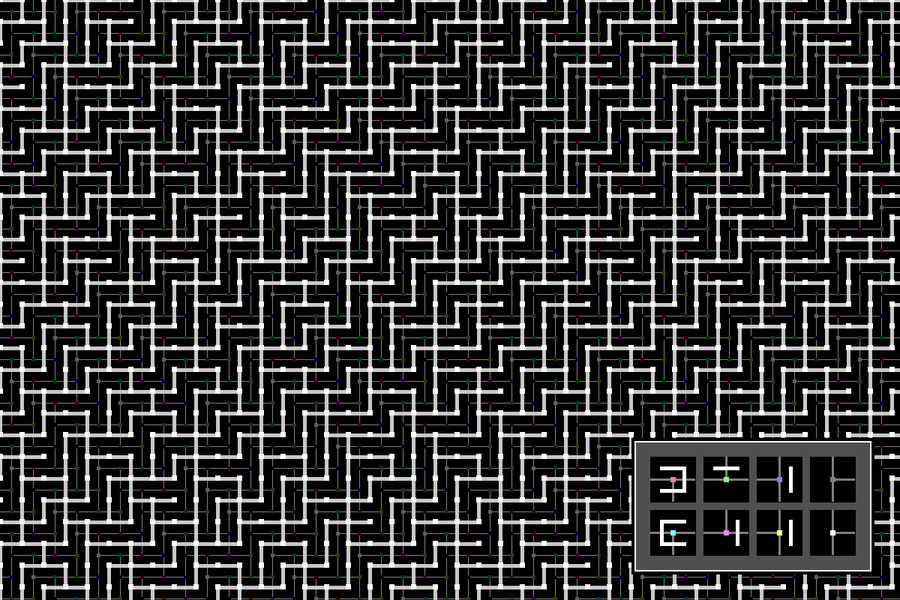
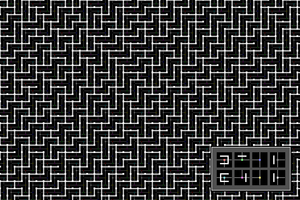

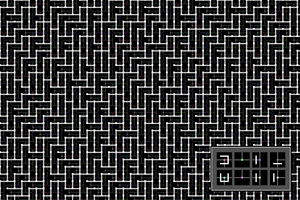



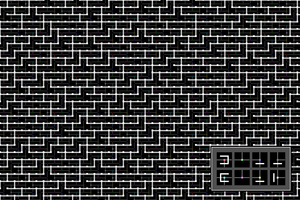

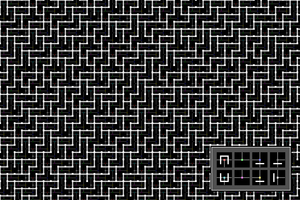


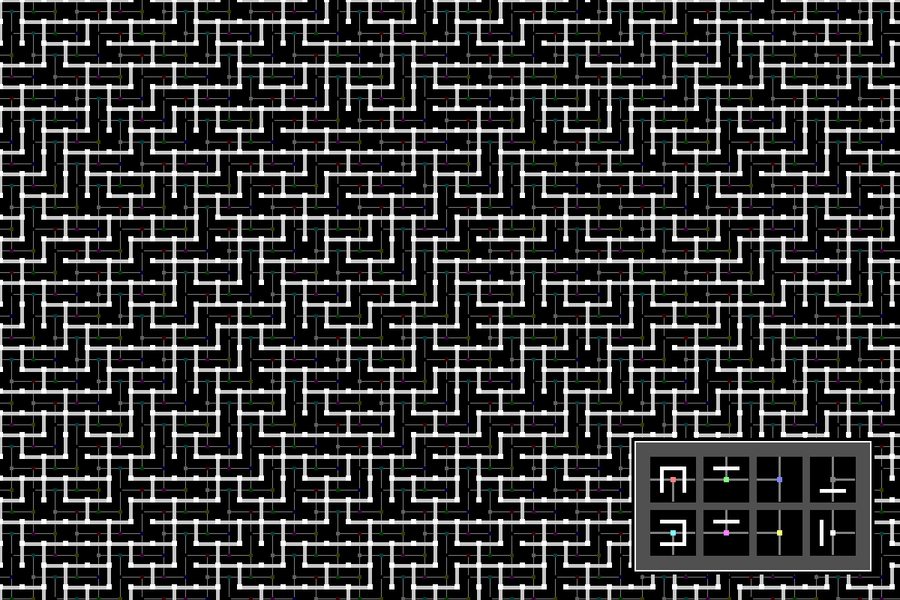

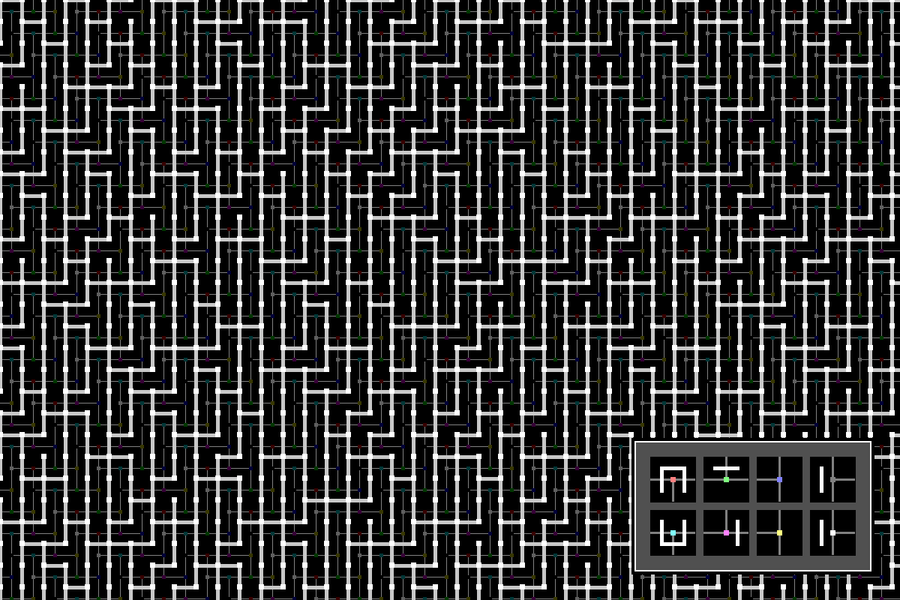
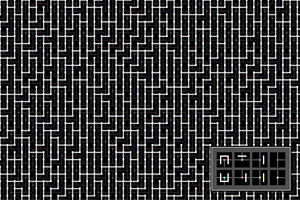
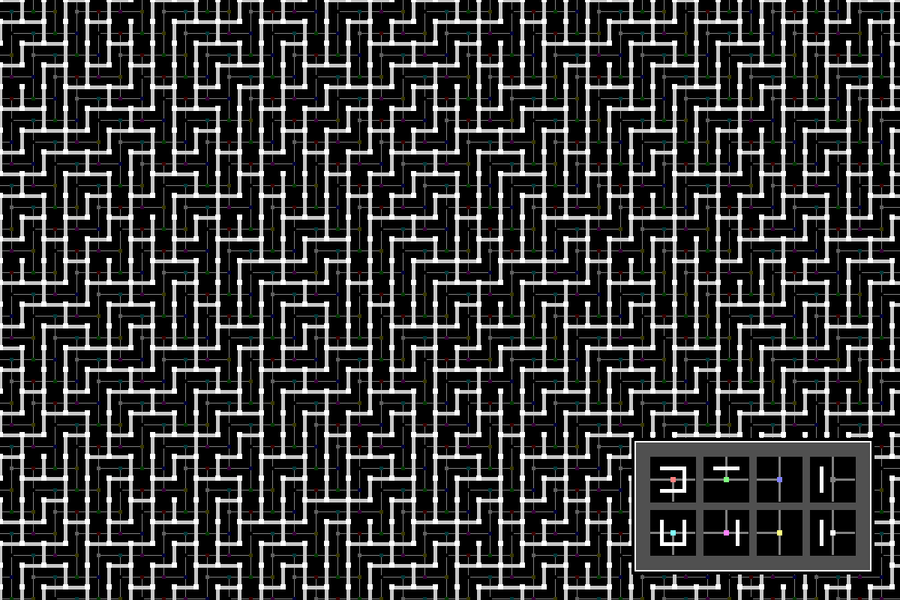

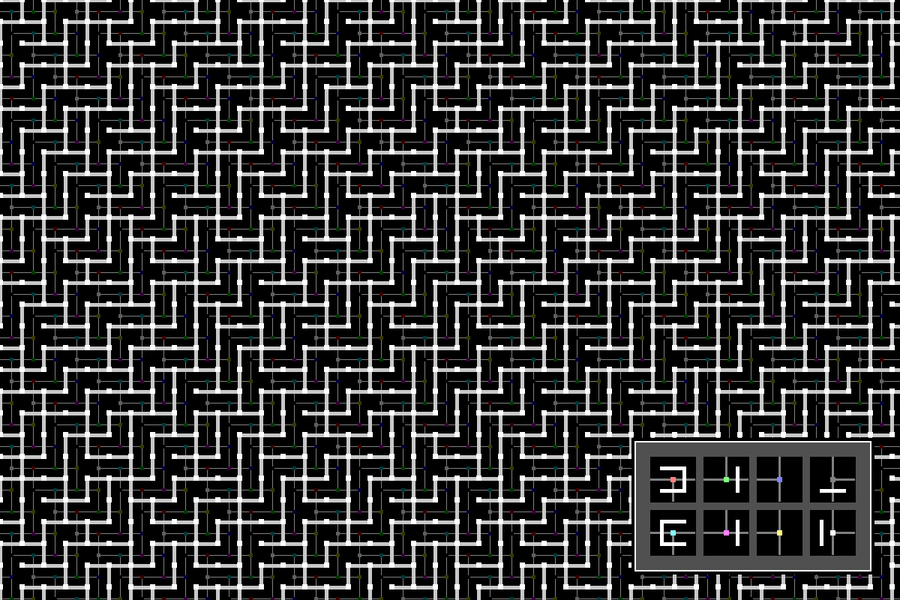
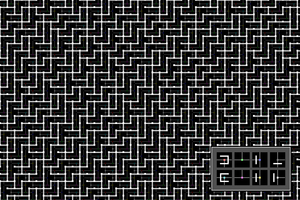
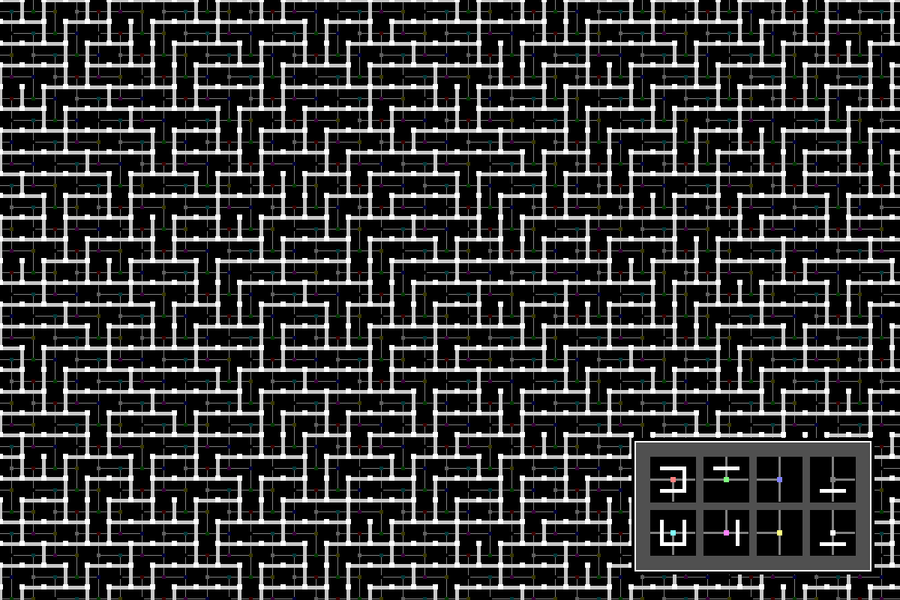



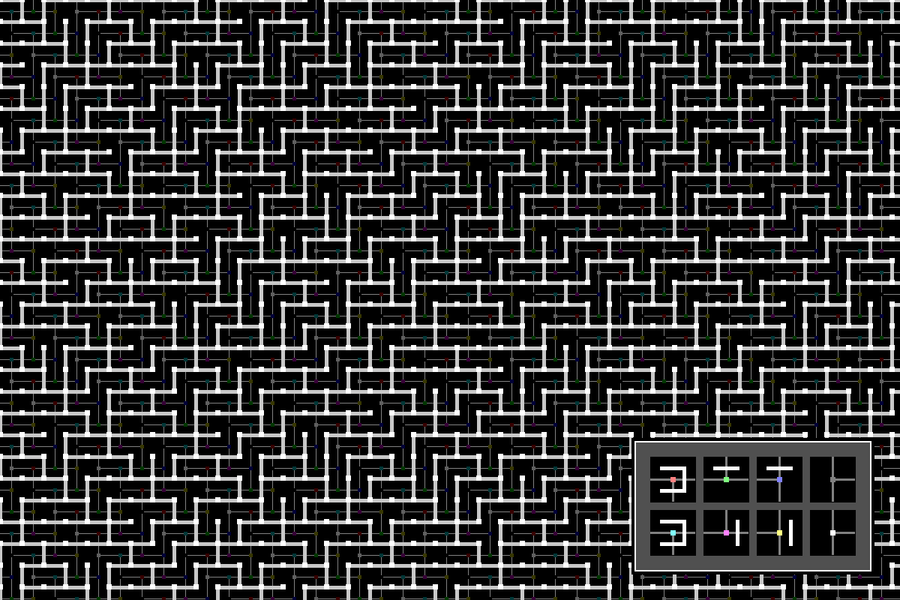
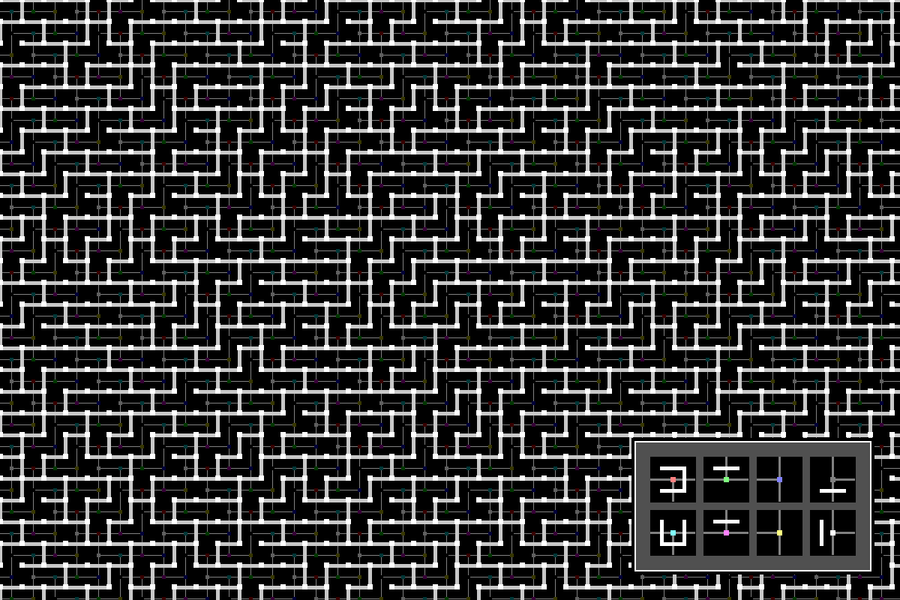


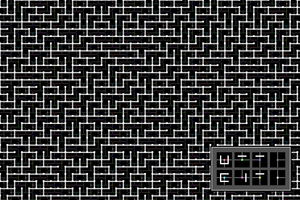

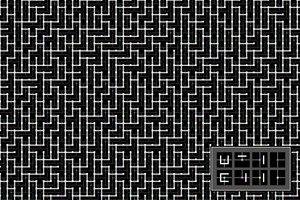


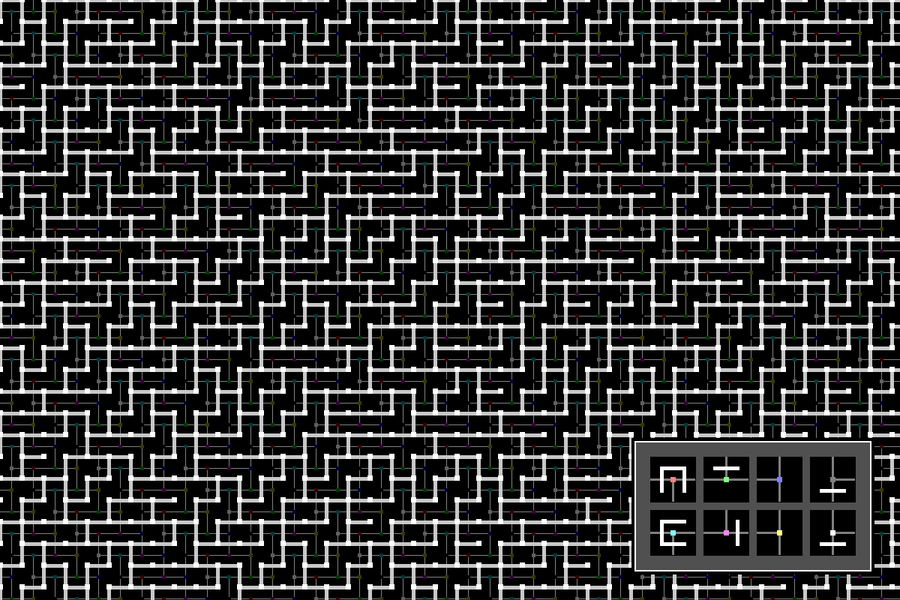
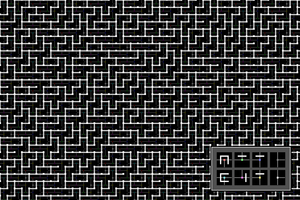

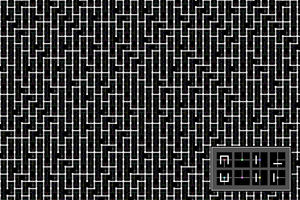
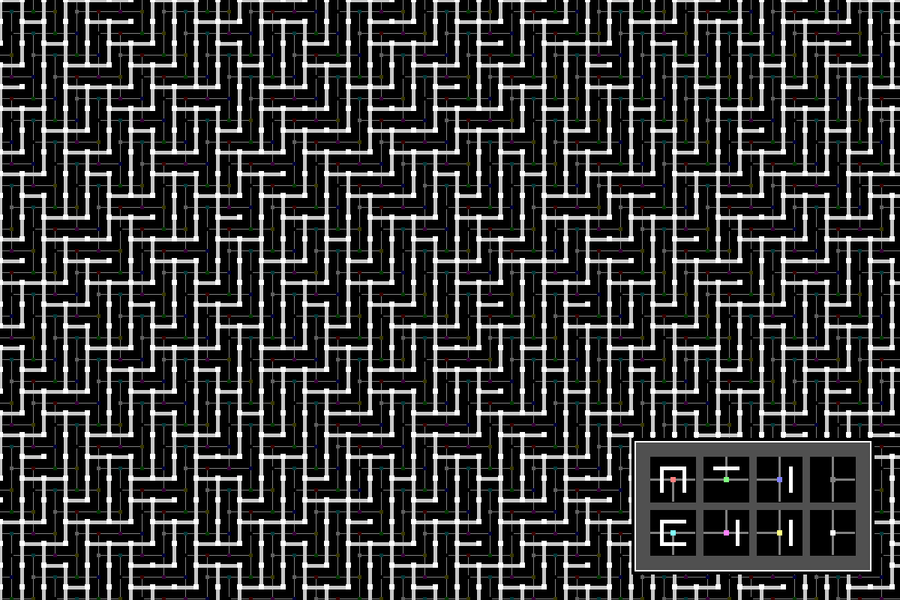
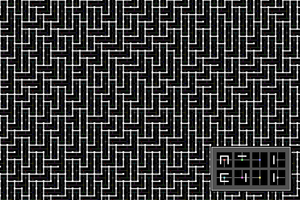


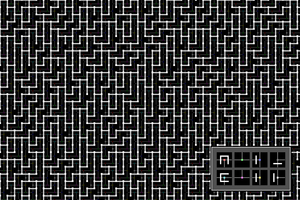
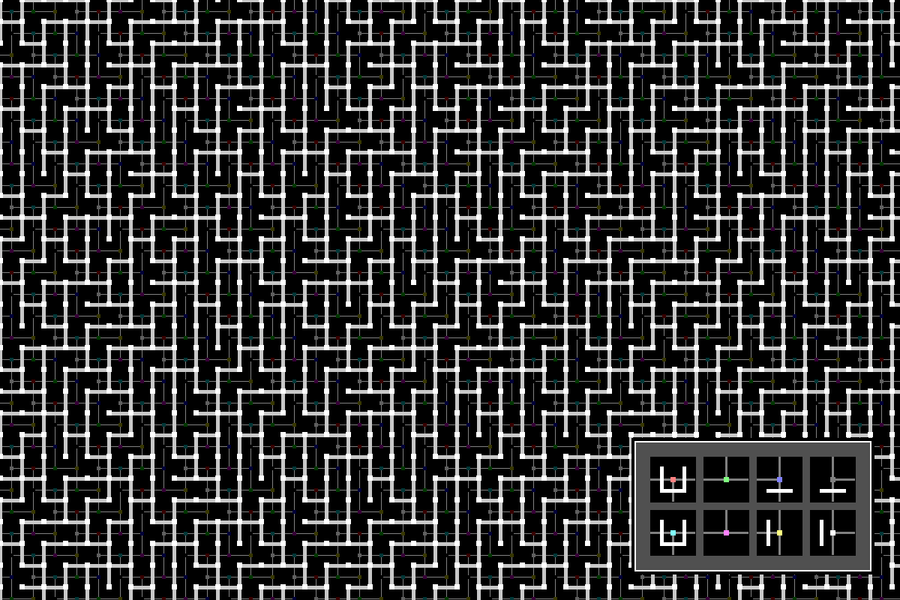


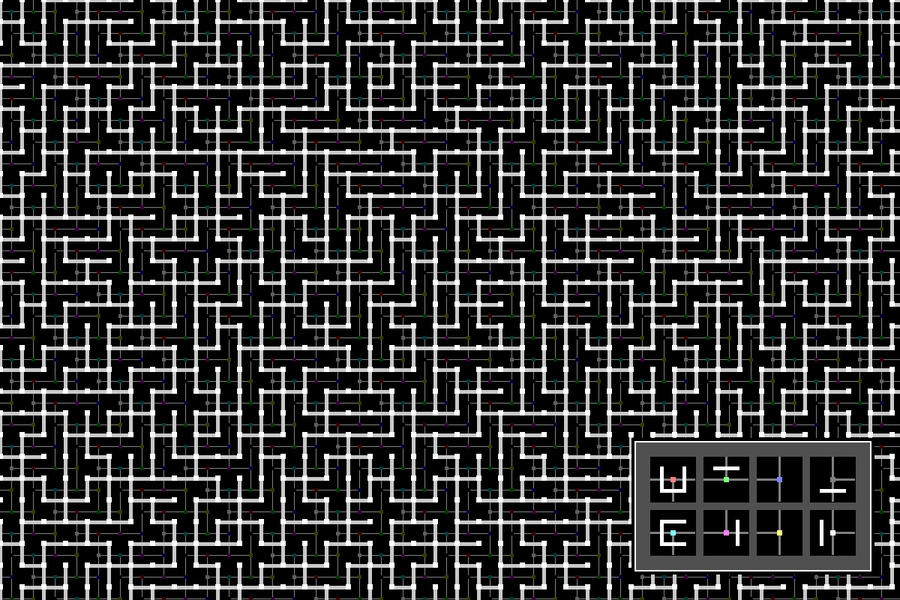
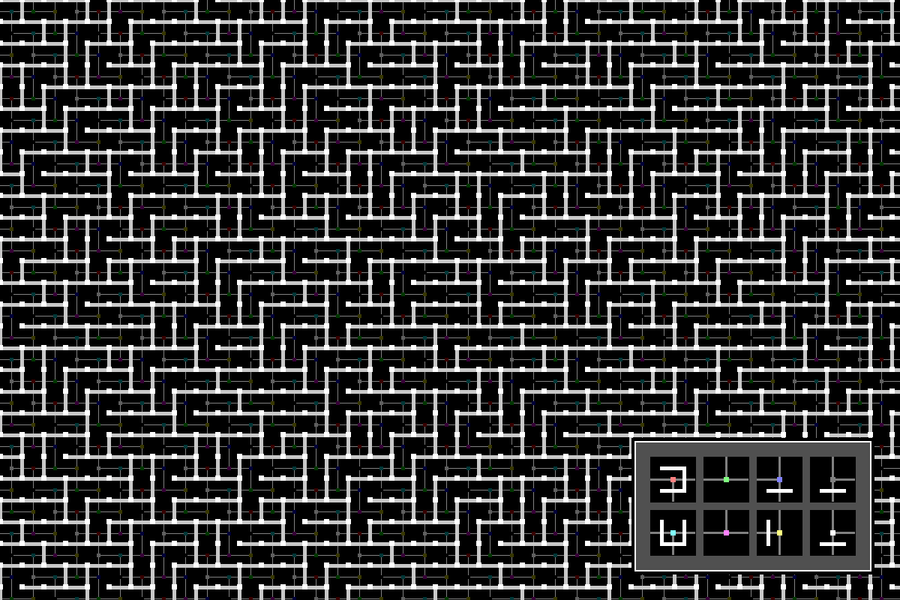
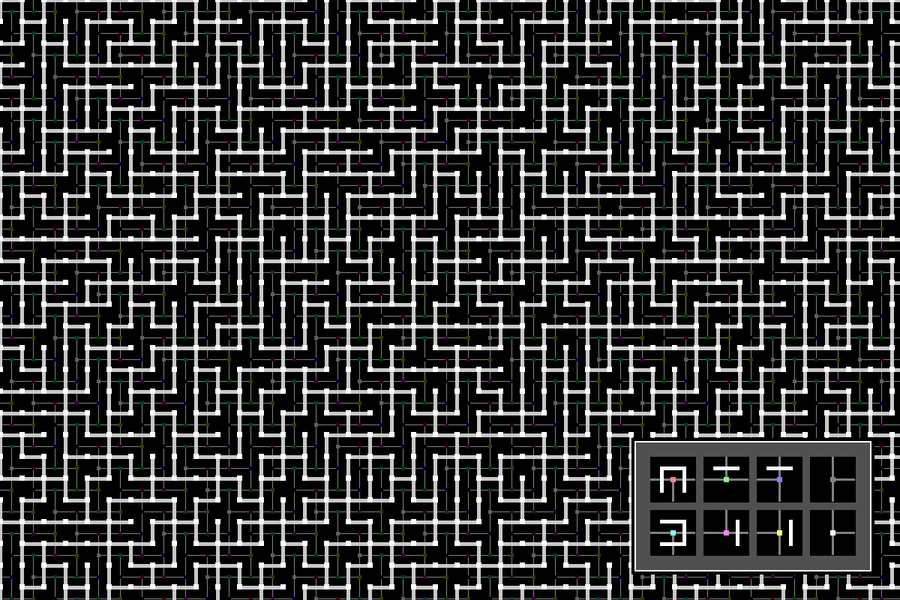
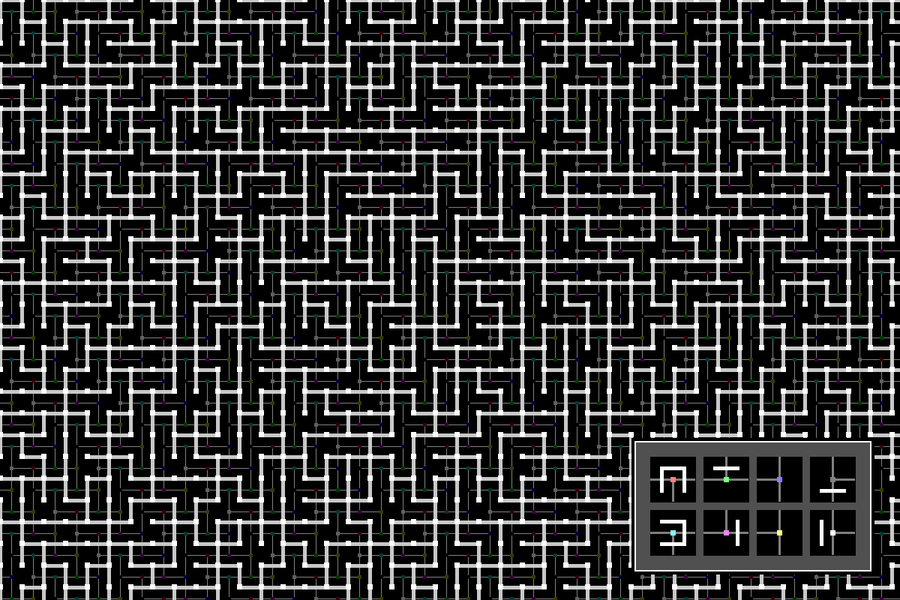


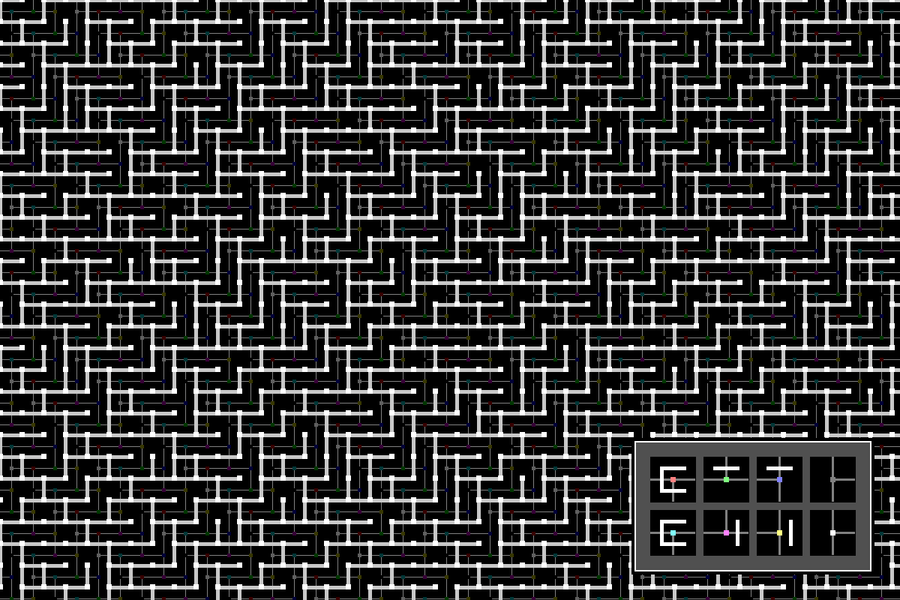

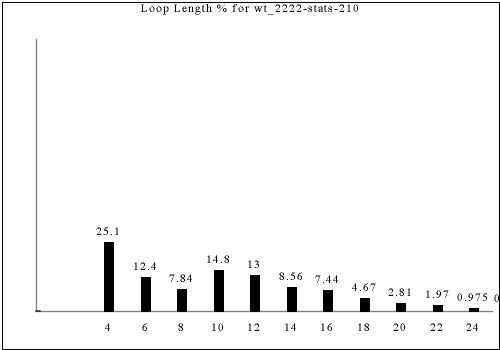



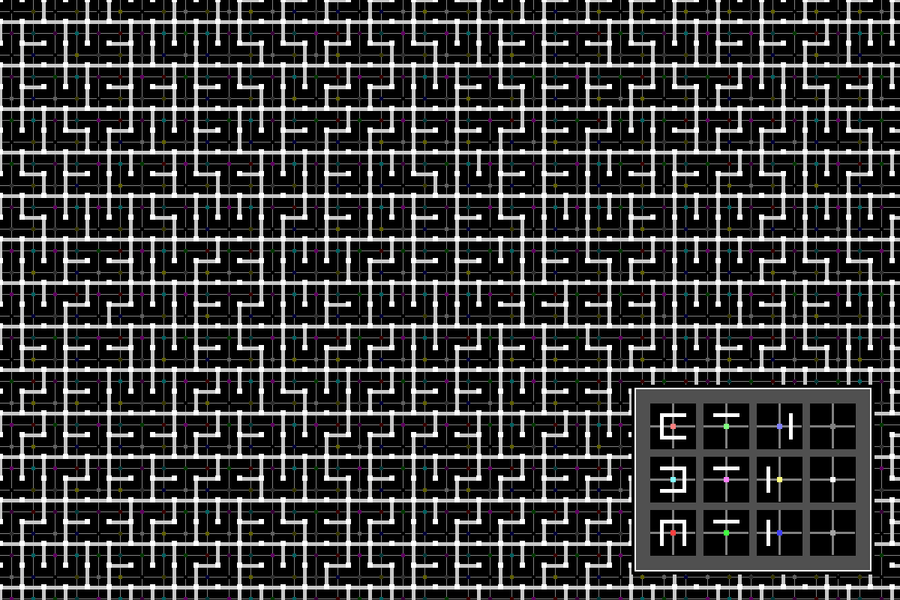

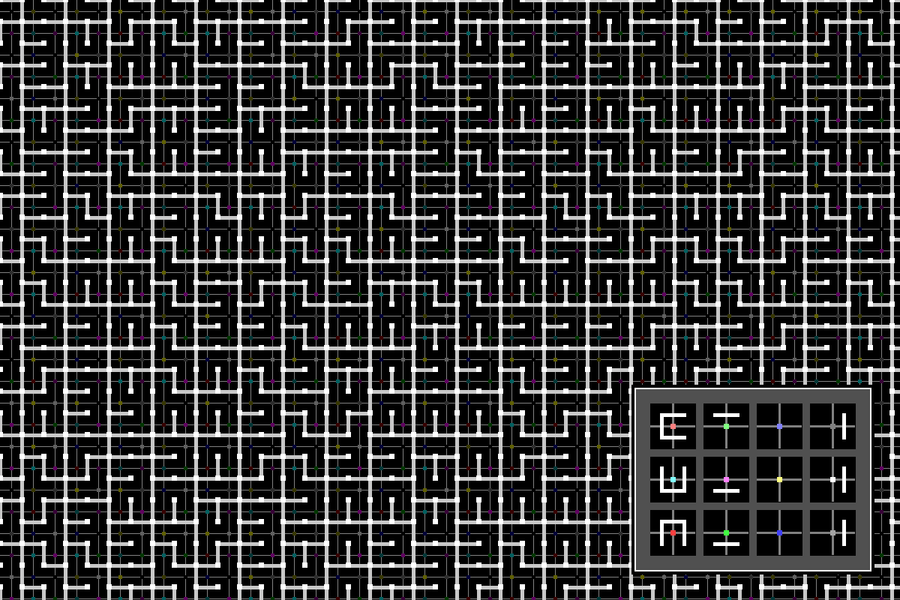

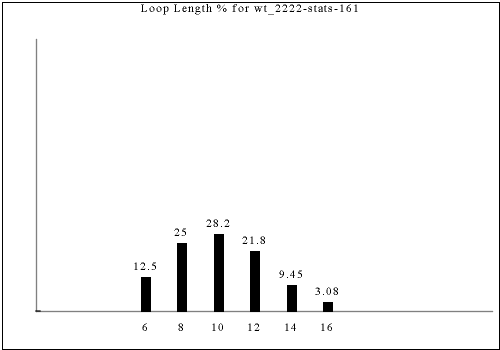


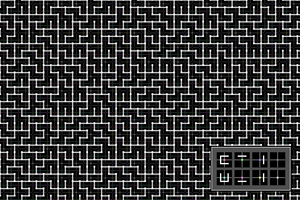



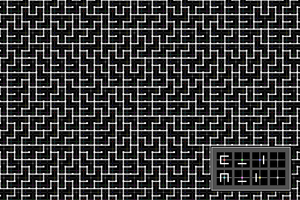
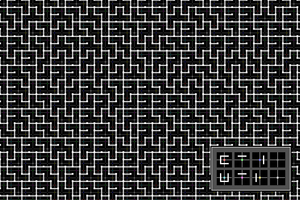



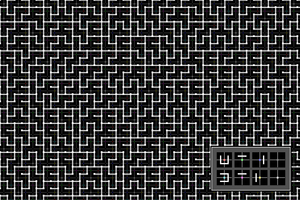
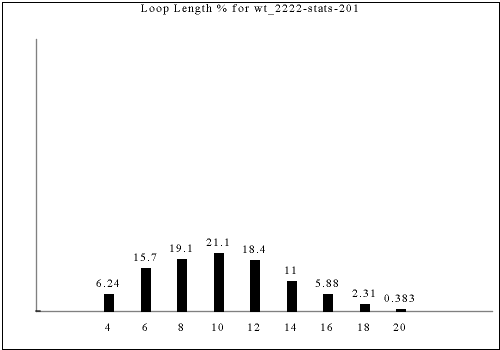


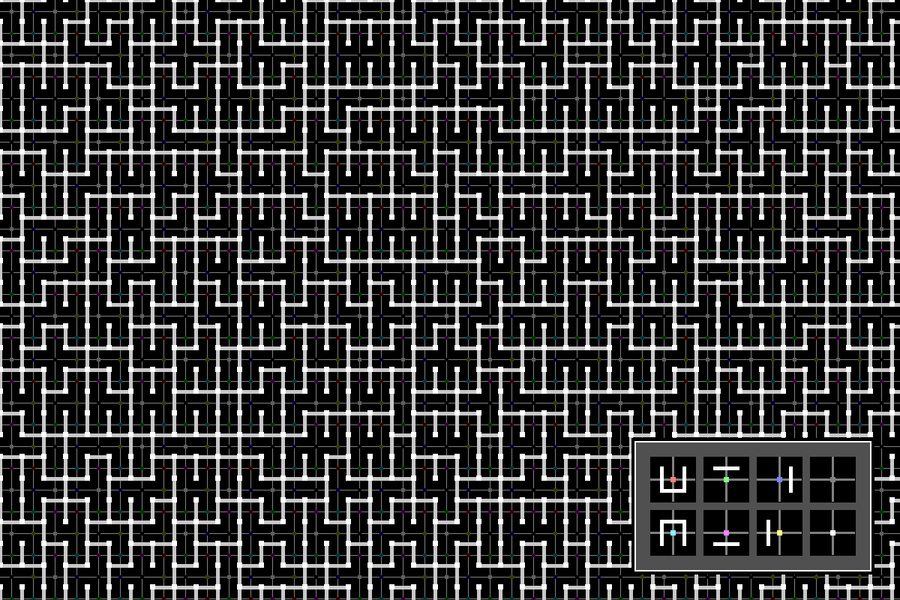
Other tilesets generate these two-long dead-ends, but the following tilesets are unique because the double dead-end occurs within a single herringbone tile, allowing the tile content to be fully tailored knowing it is a double dead-end; in other tile sets, only one of the two 1x1 tiles participating in a double dead-end--the one with the real dead-end--is known in advance to be a double-dead end.